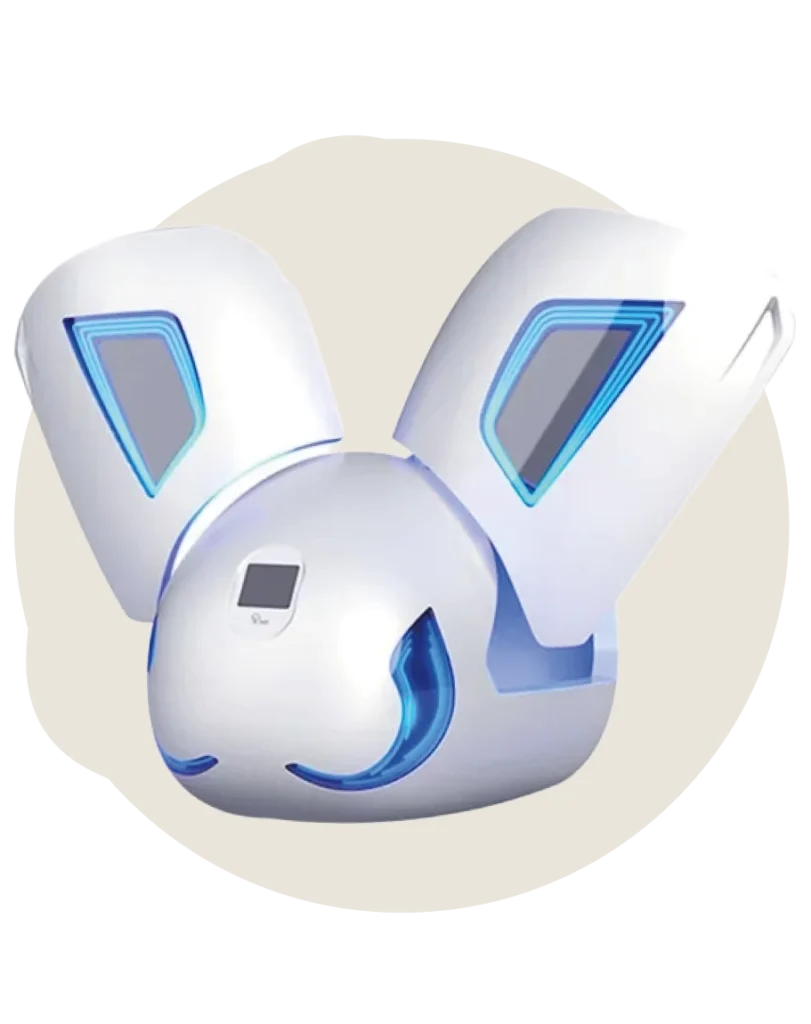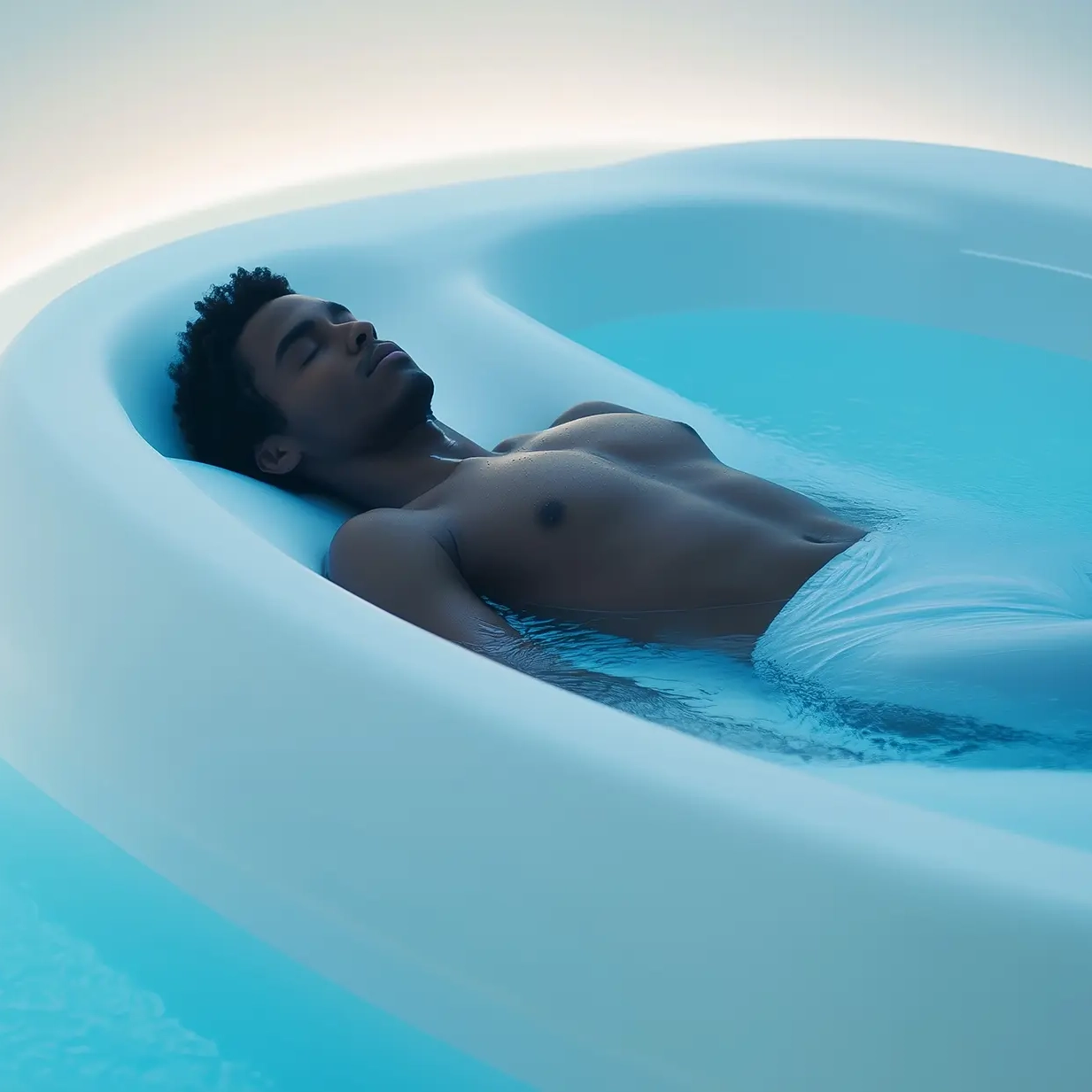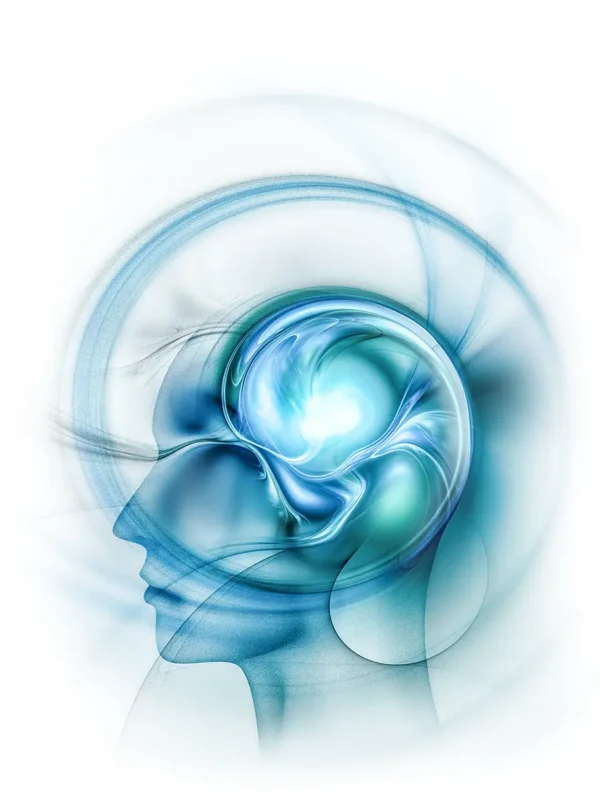Sensory Deprivation
No Stimulation
Eliminates light, sound, and touch
Mental Clarity
Calms nervous system and improves focus
Isolated Space
Fully enclosed pod for uninterrupted rest
Deep Stillness
Encourages introspection and total reset
What is Sensory Deprivation?
Sensory deprivation therapy is a method of calming the brain by removing all external stimuli — no light, no sound, and no pressure on the body. You’ll lie in a fully enclosed pod or room designed to isolate you from input, allowing your mind to disengage from constant processing and reach deeper states of relaxation and clarity.
At Lumina in Schiller Park, our sensory deprivation sessions provide a safe, private space for full mental reset. Whether you’re overstimulated, burned out, or struggling to focus, the absence of noise and input allows your nervous system to recover naturally.

When was the last time you experienced real silence? In our digital world, the brain never stops processing.
Lumina Wellness and Med Spa
What Sensory Deprivation Looks Like?
Soon you’ll be able to preview our sensory environment in a short walkthrough video, filmed at Lumina in Schiller Park. We’ll show you what the space looks like, how to prepare, and how each session is structured for maximum comfort and calm.
What to Expect After a Sensory Deprivation Session
Sensory deprivation works by isolating the brain from sound, light, and physical distractions. Without constant input, the mind shifts into theta-wave activity — the same state reached in deep meditation. This can trigger mental clarity, emotional release, and a sense of grounded calm.
After your session, you may notice sharper focus, reduced anxiety, or an unexplainable lightness. Some clients report vivid mental imagery, while others simply feel rested and centered. The absence of input gives your nervous system time to recalibrate — leaving you with renewed calm and cognitive reset.
Benefits of Sensory Deprivation Therapy
Cognitive and Emotional Benefits
Cryotherapy excels in reducing post-exercise soreness, improving circulation, and alleviating chronic pain, making it perfect for athletes and those with active lifestyles.
Sleep and Nervous System Reset
The lack of light and sound triggers the parasympathetic nervous system — responsible for deep rest and repair. Floating in this state may improve sleep quality, regulate cortisol levels, and support stress recovery without medication.
Creative Access and Thought Clarity
In the absence of distractions, the brain often begins to surface insights, ideas, or suppressed patterns. Many creatives use sensory deprivation for idea generation or to “unclog” thought loops. It’s like defragmenting the brain.

Cryotherapy
Why Choose Sensory Deprivation at Lumina
At Lumina in Schiller Park, each sensory pod is designed for full privacy and silence. The space is fully enclosed, soundproof, and temperature-controlled — with the option to float weightlessly or lie on a still, cushioned surface.
You’re never rushed. Each session includes a gentle onboarding process and private exit zone for integration after the experience. We prioritize physical comfort and mental calm so that the only thing you need to do — is nothing.
F.A.Q.
Frequently asked questions
How long does a sensory deprivation session last?
Most sessions last 45–60 minutes. This gives the brain time to settle into a non-reactive state. The first 10–15 minutes may feel like nothing is happening, but most users report deep calm and thought clarity after about 30 minutes inside.
Will I feel anxious or disoriented inside the pod?
While the silence and stillness can feel unusual at first, the experience is deeply calming for most clients. You’re always in control — you can exit at any time, and lights can be dimmed or left on as needed. After a few minutes, most users naturally drop into a peaceful state.
Is this different from floatation therapy?
Sensory deprivation can include floatation, but not always. At Lumina, we offer both floating and dry-pod isolation. Both involve silence and darkness, but one adds the experience of weightlessness. Sensory therapy is ideal for mental reset, even if you prefer to stay dry.
What should I do to prepare?
Avoid caffeine and screen time before your session. Eat light, stay hydrated, and arrive early to settle in. We provide everything else — including a quiet prep area, towels, and optional guidance if it’s your first time.
How do I know if sensory deprivation is right for me?
If you’re feeling overstimulated, distracted, burnt out, or unable to fully relax — this therapy is likely to help. It’s especially useful for creatives, entrepreneurs, busy parents, and anyone living in a high-input environment.
Be the First to Know When We Open
Our sensory deprivation rooms are launching soon in Schiller Park. Get notified when sessions open, and receive exclusive intro offers before public release.


